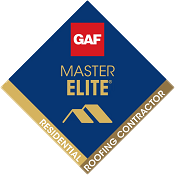As a Lakeland area homeowner, it would be wise to learn what goes into fixing a leaky roof. With hurricanes threatening our homes every year and surprise storms popping up every so often, your roof is your first and last level of protection when it comes to keeping mother nature out. When your roof bears a leak, that’s when your problems are only beginning.
A leaky roof can cause expensive water damage and can lead to dangerous mold spores growing, which can threaten your family’s health and your pets’ health. A leaky roof can also lower your home’s value, which isn’t great news if you are trying to sell.
If you have never attempted to fix a leaky roof before, it would help to have some advice from the experts. Here are ten tips for fixing a leaky roof by expert movers near you. Remember these the next time you see water stains running down your walls, which is a sure sign that your roof is leaking.
Roof Leaking? Expert Tips to Fixing Your Leaky Roof
- Do Not Delay: You may feel tempted to put off fixing that leak in your roof if you plan to get a new roof next year. However, even a small leak can lead to big problems relatively quickly. All that moisture could end up ruining your framing and sheathing. You might find your insulation completely destroyed, which can, in turn, cause your energy costs to rise. Furthermore, you may damage your ceiling, making it rain indoors as well as out the next time it pours. The best way to deal with the issue is to fix it immediately, the moment you notice your roof is leaking.
- Look for Stains: In order to repair your roof leak, you first need to locate where it might be at. Start by looking at your roof uphill from the stains. What you’re looking for are item penetrations, like a tree branch. Items that penetrate the roof are the most typical form of leaks. Conversely, it is rare to find leaks developing in areas of uninterrupted shingles. Even if your roof is old, a leak shouldn’t form until something pokes through, allowing moisture to get in. Penetrations can even affect plumbing and roof vents, dormers, and chimneys. If you have an attic, go up there and look for the leak with a flashlight. You will notice water stains, mold, or black marks. If you don’t have an attic or you have a vaulted ceiling, you might need to get onto the roof to look for the leak directly.
- Get an Assistant: When you have been all-around your roof and attic looking for leaks, and you still haven’t found the culprit, it might be time to enlist a helper. Get someone to go inside the house and look for drips of water. Meanwhile, you go up on the roof with a garden hose. Start at the lowest points and begin soaking the areas just above where the leak appears inside the house. You will want to isolate the areas you inspect when running the hose. For instance, you could soak the downhill side of the chimney before attacking each side, then the top and on both sides. Your helper should then yell when he or she notices the first signs of dripping water. This process can take time. When you have isolated the leak area, begin removing shingles from the suspect area. Once the shingles are gone, you should be able to track the source of the leak. You might see the discolored felt paper or rotted wood directly below and around the leak. You can then repair the issue before sealing it tight.
- Repair Curled Shingles: Shingles that appear curled due to moisture leaks can be re-secured by brushing them with a coat of roofing cement. Apply a hefty amount of roofing cement to the underside of the shingle to ensure the edges and corners remain secured. Then, press on the shingles firmly to set the cement and hold the shingles in place.
- Replace Damaged or Missing Shingles: When searching for leaks on your roof, look for shingles that are rotten, cracked, or missing entirely. These will all have to be replaced. Start by removing the damaged shingles by lifting the edges and carefully removing the nails with a pry bar. With the nails removed, the shingle should just slide out. Scrape the residue cement from the roof and remove any protruding nails. Before putting the new shingle in, round the back corners with a utility knife. This makes it easy for you to slide the shingle under the one above it and align it with the shingles on either side. Once the shingle is in position, lift the corners of the overlapping shingles and fasten the top of the replacement shingle with 6d galvanized roofing nails. Secure the nails in each corner and cover the nail heads with roofing cement, then smooth down the overlapping edges.
- Fix the Roof Flashing: If you have a leak caused by metal flashing around your dormers or chimney, you will need to reseal the joints using a caulk gun filled with roof cement. If you notice any damage to the joints, apply a fresh coat of cement with a putty knife to keep moisture out. If you need to replace an entire new row of shingles, or if the shingles lift from the roof a little too easily, you may have to hire a professional roofing company to inspect the damage and provide you with a long-term solution.
- Check Vent Boots: You will also want to check your plumbing vent boots and roof vents to determine if the water is entering from any of those areas. Look for cracks in the rubber fleshing or broken seams in the metal. The rubber gasket that surrounds the vent piping could be rotted. These areas will need to be repaired to prevent roof leaks in the future. You may need to replace the vent boot entirely. Make sure you use washer-head roofing screws to secure the base of the boot to the roof. If the boot is in decent shape but the fasteners seem to be missing, replace them with washer-head roofing screws.
- Seal Old Mounting Holes: Look for tiny holes that may need to be sealed caused by old vents, small nail holes that were left behind, or satellite dish brackets, for example. These tiny defects can cause small leaks that lead to considerable damage for years before they are detected. You can patch these holes up by slipping a piece of roof flashing underneath the shingle. You can then add a bead of caulk or roof cement to the top and bottom edge of the flashing to secure it in place.
- Fix Your Gutters: The gutters on your house may be causing your leaky roof. Grab a ladder and thick gardening gloves and start pulling out any debris that may be causing clogs. You should also trim overhanging tree branches to keep your gutters clean and roof free of leaves and other debris.
- Inspect Roof Dormers: Dormer walls provide plenty of spots where water can dribble down and enter the roof. The caulking could be old or cracked or even missing between the corner boards and between the siding and window edging. Water leaks into these cracks and works its way behind the flashing and into the house. Even caulk that appears intact may not be sealed adequately against the adjoining surfaces. Begin digging around with a putty knife to ensure the area is sealed. Then, dig out any suspect caulk and replace it with quality caulk. Check the siding above the step flashing and replace any rotted, cracked or missing siding. When replacing the siding, make sure the new piece overlaps the step flashing by two inches at least. If your roof still leaks, pull the corner boards free and check the overlapping flashing at the corner. You should notice old caulk where the two pieces overlap at the corner.











4 Responses
Recently, my roof starts leaking and I acquired the services of roof replacement inc. I must say that it is very heartening to see the professionalism.
I’m so glad that you explained why we should repair a roof leak before it’s too late! A few days ago, I visited my brother and realized his house has some leaks. I talked to my brother about the roof leaks, but he said it was nothing to worry about, so I’ll share your article with him now! Thank you for helping my brother understand he needs to find a roofing contractor before his house gets water.
G’day mate! Now, a sudden hailstone rain yesterday caused a few holes on my house roof which really deform its beauty. However, you were kind enough to let us informed about how we could hire a roofing contractor since it’s much safer that way.
Its interesting when you said that curled shingles can be re-secured with a coat of roofing cement if they’ve been exposed to dampness.